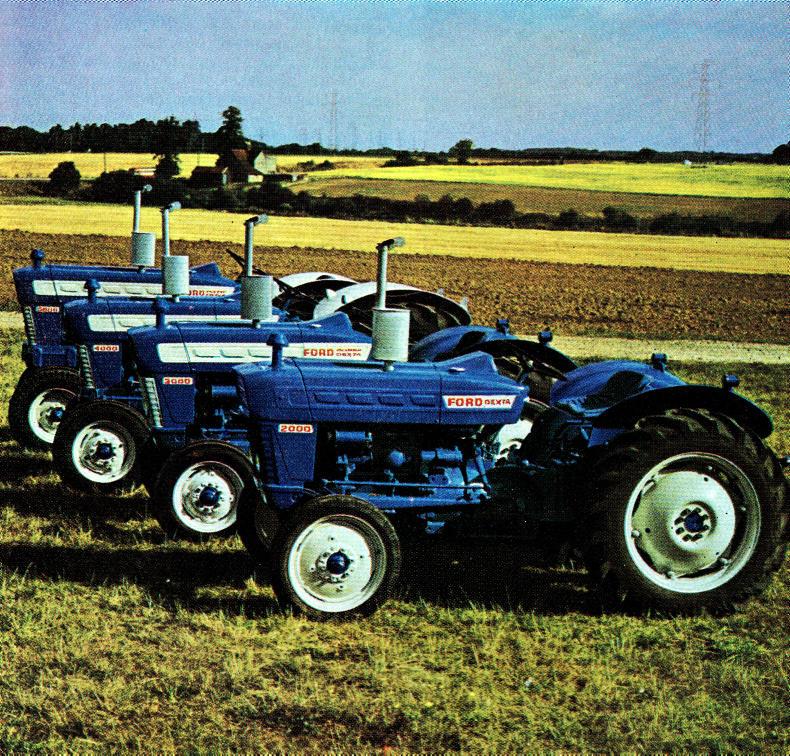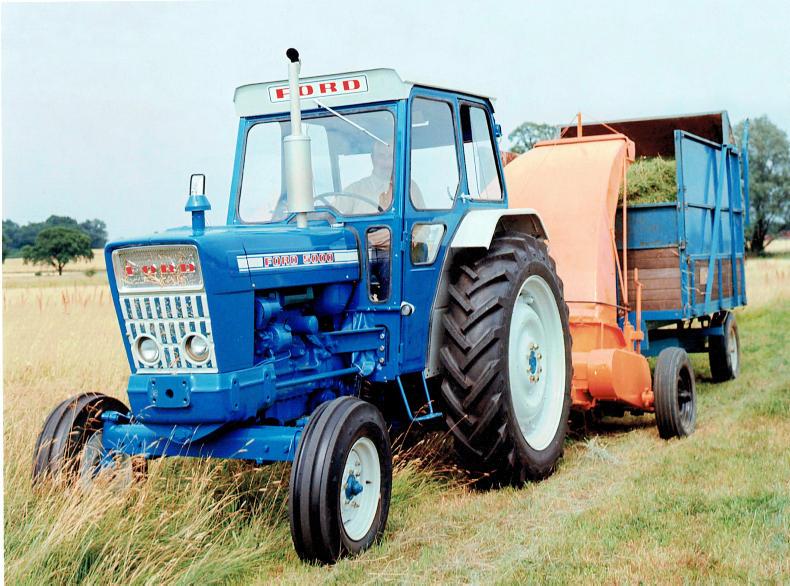It’s easy to think of Ford as one of the oldest brands in the tractor business, but as any true tractor enthusiast will tell you, the Ford name was actually only used for just over 30 years on European-made tractors built by the US company.
A trademark debate in the US meant that Fordson was the brand used for Ford’s agricultural products for the first 47 years of its tractor production activities, from the introduction of the Model F in 1917 through the production of the Cork-made N to the E27N and the various incarnations of the Dexta and Major.
Production of the first machines to bear the Ford name coincided with the 1964 opening of the then new production facility at Basildon, following the decision to cease tractor manufacturing at the firm’s car plant in nearby Dagenham and dedicate a factory to tractors. By this time, the legal issues over the use of the Ford name on tractors had been resolved and the clean-sheet design of the 6X series still carried the Dexta, Super Dexta, Major and Super Major names to help customers to understand their capabilities, but the new 2000, 3000, 4000 and 5000 designations were more prominent. The era of the Ford tractor, with its mid-blue paintwork and white wheels, had begun.
Joint venture
The new Ford 6X range was a joint venture between Ford HQ in Detroit and the tractor engineering team at Dagenham, most of whom moved over to Basildon as the factory opened and the launches of the new tractors in markets around the world took place.
With new modern styling and an eight-speed transmission, plus a clutchless Select-O-Speed option, the new machines were well-received across Ireland, the UK and beyond.
As with every new tractor range, though, there were one or two gripes – not every owner and operator felt that having overlapping fourth low and first high gears was a good idea, believing they had been short-changed by the eight-speed description.
One of the primary innovations on the new tractors was the Select-O-Speed clutchless transmission option. Although often criticised for being a problematic gearbox, the issue with Select-O-Speed reliability seemed to be more about a lack of operator training and understanding than a fault with the transmission itself.
“For whatever reason, it seemed to work best in the 5000, but in the 4000, in which the box had to be turned upside down for fitment, it was particularly unreliable,” recalls David Pearson, who started work with Ford at Dagenham just a few years before Basildon opened and went on to hold senior sales and marketing positions within the company.
“A lot of development work followed as a result, before the tractors were replaced four years later by the improved 6Y series.”
Redesigned grilles
Although their numbers were unchanged, the new tractors were easily identifiable by their redesigned grilles and bold new decals with red lettering, marking the retirement of the Dexta and Major names and their Super equivalents. Along with them came the option of a full Ford safety cab fitted at the factory.
“As a keen tractor driver myself, I always yearned for more horsepower and, during the early 1970s, I saw an advertisement for a Northrop turbocharger kit to fit the Ford 5000, at a cost of £120,” recalls David Pearson.
“We had some money from bar profits at Boreham House, the Ford training school, so I invested in a kit, and an hour after its arrival we had created the very first 7000. It gave the tractor an extra 19hp, taking it to 94hp, and it was unbelievably quiet in comparison. The engineers at Basildon took some persuading to see the merits of the idea, but eventually the 7000 became the first UK-manufactured production turbocharged tractor.’’
The next range of tractors from the Basildon factory, the 7A1 series, at first looked little different from their forebears, with decals and a few driver comfort improvements being the few outwardly notable differences. However, a year after their launch, with the imposition of quiet cab legislation in 1976, their appearance changed radically, with all models from the 37hp 2600 to the 97hp 7600 gaining what later came to be referred to by many as the Ford bubble cab. That brought with it previously unheard-of comforts such as ventilation and heating, a radio and even the option of air conditioning on larger models.
The tractors underwent a mild transformation in 1981, with the launch of the Series 10. Ford again introduced a new transmission development, this time primarily to try and create a semi-flat cab floor.
However, moving the gear and range selectors from between the driver’s legs up to the steering column was not a popular move, and this transmission operation idea was soon dropped.
The Series 10 tractors were upgraded in 1985 with the introduction of the Force II versions. Among the most distinctive differences was the square-topped Super Q cab, with its bank of four front halogen worklights. Probably the most famous member of the Series 10 family was the 98hp six-cylinder 7810.
“Sometime in the mid-1980s, I was talking to Eric May at South Essex Motors, to whom we contracted out special build projects,” recalls David Pearson.
“We were discussing whether we could create a compact 100hp six-cylinder tractor based around the 7610, to compete with others in this sector. The SEM team subsequently built three prototypes, which were received lukewarmly by our engineers, who were unconvinced by the merits of the idea. Ultimately, though, Ford purchased the design from SEM, and in its first year the 7810 made a profit of $6m.
“The tractor went on to become one of Ford’s most popular sellers of all time, and when the Basildon plant celebrated 25 years of tractor production in 1989, to mark the occasion we released the 7810 Silver Jubilee tractors in a silver livery and with a high specification. We built 150 tractors, each equipped with air conditioning, an automatic pickup hitch, four spool valves, a performance monitor and many other goodies available at the time.”
The Series 10 tractors were replaced by the all-new Series 40 in late 1991, and this marked the last of Ford’s involvement in tractor design.
While the tractors had been in development for some time, Ford had long been wanting to focus on car manufacturing, and the previous year had agreed with Fiat to sell its farm equipment business, by now Ford New Holland, to the Italian firm.
As a result, by 1995 the Ford name was reduced to a small decal, and Fiat chose ultimately to adopt the blue livery and the neutral New Holland name. The Ford name has gone from farming, but the colours, the legacy and the Basildon factory remain.
For those interested in Ford’s involvement in farming, and David Pearson’s role in the business, Forty Years with Ford Tractors, written by David Pearson with help from Martin Rickatson, is available from Old Pond Publishing and various booksellers, priced at £9.95.

The Ford name first appeared on tractors in 1964, with the opening of the Basildon factory and the introduction of the 6X series.

In 1968, the improved 6Y range was launched, distinguished externally by new decals and a redesigned front grille.

At first, the 7A1 tractors looked little different from their forebears, only their decals giving them away externally.

The introduction of Q cabs in 1976 saw the 7A1 tractors gain a radical new look and high levels of driver comfort.

Series 10 Force II tractors were launched in 1985, with a Super Q cab design. The 7810 was introduced in 1987, and the Silver Jubilee version in 1989.

In 1981, the Series 10 tractors were introduced. Among the key innovations were steering column-mounted gear levers.

The last tractors to be labelled fully as Fords were the Series 40 models introduced in late 1991. Ford announced the sale of its agricultural business to Fiat the previous year.






 This is a subscriber-only article
This is a subscriber-only article












SHARING OPTIONS: